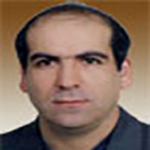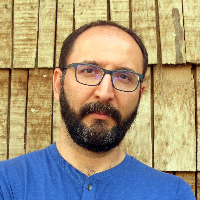Seljuk Brickwork Decorations and Their Sustainability in Khwarezmid and Ilkhanid Decorations
Seljuk period is one of the important periods of Islamic Art in Iran architecture. The Seljuk brickworks represent Iran architectural perfection in aspects of techniques and variety. The magnificence of Seljuk brickworks is not found in other later periods. Therefore, further investigation is needed due to the importance of this issue. In this research, literature reviews, field studies and survey is done by analytical- descriptive method. The aims of research are as followed introducing the important motifs of brickworks identify, variety of layout types, and the sustain modality of brickworks during the historical periods. According to the aims, all of Seljuk monuments in Iran which have brickwork decoration were detected and their brickwork decorations identified. The decorations which were unique at that time and were repeated, has been determined as index motifs. Afterward, these motifs and the techniques were found in Khwarezmid and Ilkhanid monuments and their changes or conversions to other decorations have been identified.
Most of the architectural exterior surfaces are decorated by the brickwork in Seljuk period funerary monuments with polygonal plan have the most decorative surfaces such as Kharaghan tombs and minarets. In this period, the simplicity of minarets was changed to richest drawing and decorative forms such as Menar-e Ziar and Cheheldokhtaran. It is noteworthy that in addition to this, the monuments including the Robatsharaf Inn and Jame mosque of Golpayegan are decorated with verity brick motifs which combine with stucco reliefs. In general, decorative designs and prolific body of brickwork is one of the special features of Seljuk architecture.
Various brick rows are used in the Seljuk monuments and they are categorized to Golchin, Jenaghi, Hasiri, Doraj, Kofi Magheli and Bannaie inscriptions. Golchin’s motifs have some “mother” patterns which are combined tomake various designs. Golchin motifs perform in tow groups “simple” and “compound”. Jenaghi brickwork, perhaps because of its easy performance,has usually been used in corner of the dome and arches. Also some different technique of brickworks such as “Khofteraste” (relieve motifs), Moshabak, Gerehbannaie perform in outer surfaces of Seljuk monuments. Khofteraste brickwork technique was used in high altitudesin order to relieve its motifs. Moshabak technique was used in doorway to pass light through andGerehbannaie generally was used for minaret decorations Selengeh, Chaharlengeh, Sheshvahasht are the prevalent motifs of Ghereh in Seljuk period. An innovative technique: combination of brick with different materials used in Seljuk period that followed in later periods. Hence, Seljuk monuments are decorated by different brickwork in motifs and techniques including the Golchin and Gereh. In addition, initiative techniques such as the incorporation of brick with tile (glazed brick) or stucco were created by artists as well as Kofie-bannaie. Accordingly, it is obvious that Seljuk brickwork decoration is the rising point of Persian brickworks.
In Khwarezmid and Ilkhanid periods, brickwork decorations were not used as extent as before. In these periods, brickwork was replaced with stucco and tile. However, some of brickwork decorations such as Golchin, Doraj, Magheli and Bannaie inscriptions were followed by the next periods. Also, the Gereh motifs of Seljuk period became the source of compound decoration for the next time. In Khwarezmid period, molded bricks with relief motifs were developed. This kind of molded bricks in combination with glazed molded brick or the tile, which were pre-cut or insitu-cut, became very common throughout, Khwarezmid and Ilkhanid periods. In such way that incorporation of brick with tile included the hole of decorations during the following periods. Pre-cut brick and pre-cut tile techniques at the end of Seljuk period were used in GonbadKabud in Maragheh and it became the beginning point of this type of decorations in the following periods. The techniques of brick and tile combination so called-Moarraq (mosaic) exists in Khwarezmid monuments such as ForoumadJame mosque and Malekzozan. Also, some skillfully combination of brick and tile were used in two important Ilkhanid monuments including Gonbad-e Soltaniye and Bayazid-e Bastami treasury. It could be argued that combined decorations (combining brick with tile) belongs to the culmination of Ilkhanid decorations. Hence, variety of techniques and innovations that happened in the brickworks of Seljuk periods caused some changes in the decorations of the following periods. Gradually, new types of architectural decoration over the motif, function, and accomplishment were developed based on changes done during Seljuk period.
- حق عضویت دریافتی صرف حمایت از نشریات عضو و نگهداری، تکمیل و توسعه مگیران میشود.
- پرداخت حق اشتراک و دانلود مقالات اجازه بازنشر آن در سایر رسانههای چاپی و دیجیتال را به کاربر نمیدهد.



